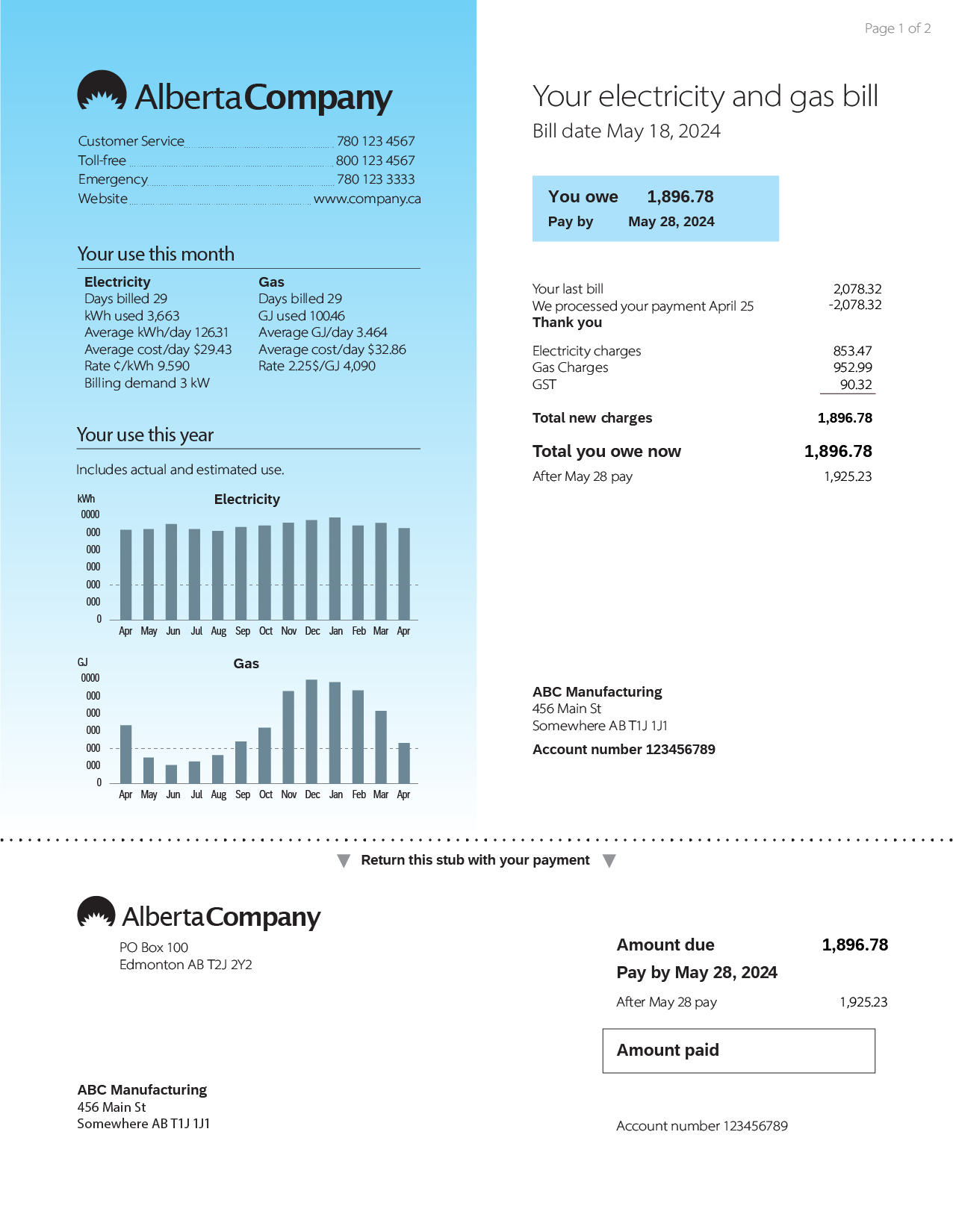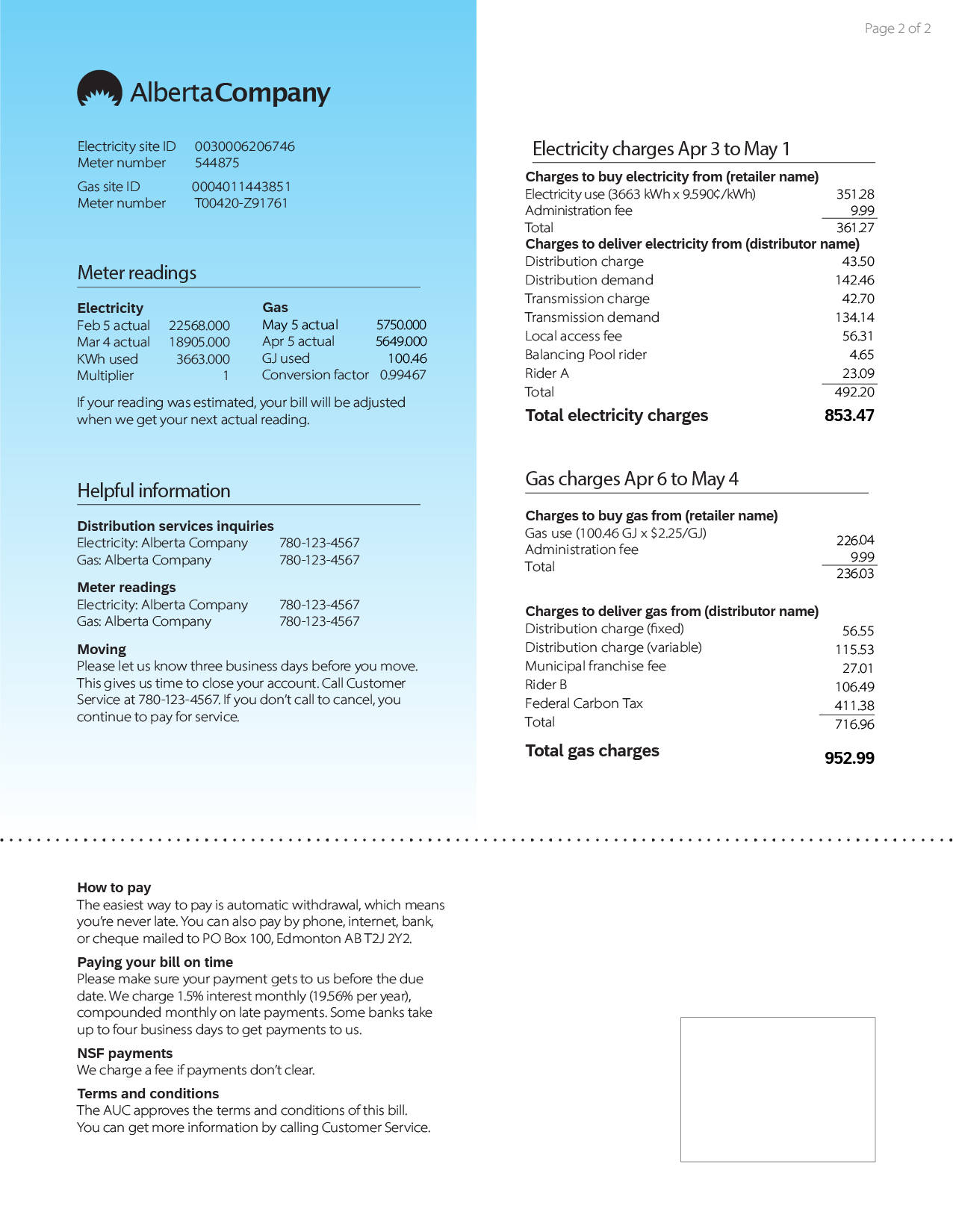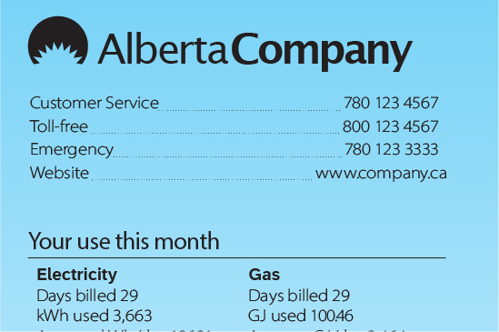Depending on the rate plan you have, you might receive two separate utility bills – one for electricity and another one for natural gas, or your bill might be bundled and include both power and gas. Even if you have automatic withdrawals or e-bills, you should check your small business utility statements monthly to ensure your charges are accurate.
Line items on your business utility bill
Although retailers' bills all look different, they will all contain similar information and line items. According to Section 4 of the Billing Regulation, 2003 (electricity) and Section 4 of the Natural Gas Billing Regulation, electricity and natural gas bills must show all credits or charges as separate line items and include the following:
- Amount charged by the retailer for energy;
- Customer’s electricity or natural gas consumption;
- Period of time used to calculate each charge;
- Retailer’s charge for administration serving the customer’s account;
- Amount collected from the customer by the retailer and paid to the energy distributor under the distribution tariff;
- Any amount collected by the retailer and charged to the customer by their municipality. Listed on utility bills as “local access fee” for electricity or “municipal franchise fee” for natural gas;
- The customer’s site identification number or numbers as specified in the ISO Rules for load settlement;
- Contact information for energy retailers and distributors;
- Customer contact information, or a person authorized to act on the customer’s behalf.
Depending on your utility rate class and the energy provider you are with, you might see other line items on your statement. If power demand charges are applicable to your rate class, they might be displayed as a separate line item or included as part of the delivery charges.
Please click on the image to learn about various line items and charges on your electricity or natural gas utility bills.

There are two kinds of retailers. Regulated retailers set their rate using a formula approved by the Alberta Utilities Commission. Competitive retailers set their rate independently. You choose the kind of retailer and which company to buy your energy from.

Transmission: Transmitting electricity or moving gas over long distances from the source to your local area.
Distribution: Transmitting electricity or moving gas within your area, usually within your city or town.
Transmission: Transmitting electricity or moving gas over long distances from the source to your local area.
Distribution: Transmitting electricity or moving gas within your area, usually within your city or town.
Main charge categories
Two main charges make up your small business energy bill:
- The cost of energy consumed; and
- The cost of delivering this energy including demand charges where applicable.
The cost of energy consumed
The energy charges are based on how much of the actual electricity or natural gas passed through your meter during your billing cycle. Your energy fee is calculated by multiplying the rate you are charged by the amount of energy used. Your retailer determines your consumption by using readings taken by the distributor from your meter.
The cost of delivering energy to your business
Delivery charges cover the cost of installing, operating, and maintaining the infrastructure used to transmit energy to your home:
- For electricity, this infrastructure includes poles, wires and transformers.
- For natural gas, this infrastructure includes pipes and compressor stations.
Distribution company rates are regulated by the Alberta Utilities Commission (AUC), an independent, quasi-judicial agency associated with Alberta Energy. The AUC holds rate hearings to ensure that you receive safe and reliable services at a reasonable cost.
Small municipalities, rural electrification associations, and natural gas co-ops have their fees set by their municipal council or board of directors.
Demand charges are part of delivery charges and mainly apply to industrial utility consumers' electricity bills, but they may also be relevant to small businesses. These charges are based on the highest amount of power (kilowatt or kilovolt-ampere) needed at a given point in time.
As business grows
As a small business expands, the electricity and natural gas needs may evolve as well.
Businesses whose electricity usage exceeds 250,000 kWh/year and/or natural gas usage is above 2,500 GJ/year and have more than 100 paid employees may be able to access customized utility rates through specific retailers.
Business owners should reach out to retailers directly and advocate for electricity and natural gas plans tailored to suit their needs.
Larger businesses can seek clarification on bills, rates, and charges directly with their retailer or distributor.


